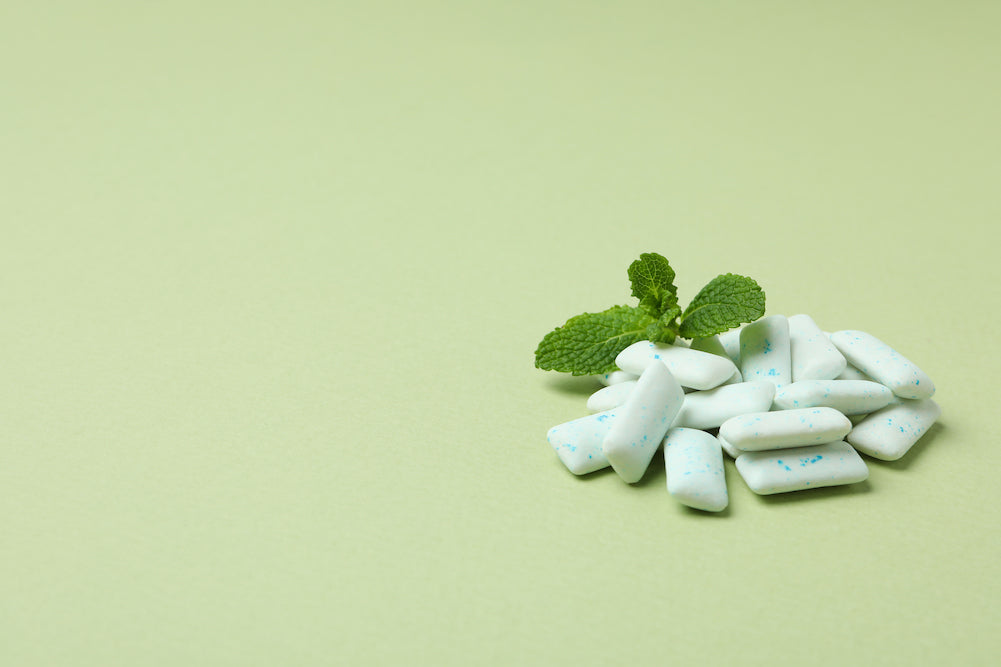When it comes to chewing gum and confectionery products, Simply Gum stands out as a brand that prioritizes natural ingredients, transparency, and eco-friendliness. With a commitment to providing a better, safer, and more sustainable alternative, Simply Gum has captured the attention of conscious consumers. Let’s explore what makes Simply Gum a standout choice in the gum industry.
Natural Ingredients and Transparency
At Simply Gum, simplicity and quality ingredients take center stage. They believe in using only the necessary and highest quality components in their products. Artificial flavors, colors, and sweeteners have no place in their gum and confectionery offerings. Instead, Simply Gum sources natural ingredients, ensuring a clean and straightforward approach. When you chew their gum, you can trust that you’re indulging in a treat that is free from unnecessary additives.
The Chewing Gum Innovation
One of the key differentiators of Simply Gum is their gum base. While many conventional gum brands use synthetic plastic as the base, Simply Gum takes a natural and eco-friendly approach. They use chicle, a naturally derived tree sap, as the foundation of their gum. Chicle provides a naturally chewy texture and a biodegradable alternative to synthetic gum bases made from plastic. When you choose Simply Gum, you’re caring for your well-being and supporting a more sustainable gum industry.
Eco-Friendly Practices
Simply Gum is committed to minimizing its environmental impact. Sustainability is at the forefront of their business practices, from the packaging to the ingredients. The packaging used by Simply Gum is made of recyclable uncoated paper. This choice reduces waste and encourages customers to join the recycling movement by disposing of their packaging responsibly. Simply Gum demonstrates their dedication to reducing their carbon footprint by opting for recyclable materials.
Moreover, their emphasis on natural ingredients extends beyond the gum base. Simply Gum prioritizes sourcing high-quality and organic components. They strive to support sustainable farming practices while avoiding genetically modified organisms (GMOs) and synthetic pesticides. By making mindful choices in ingredient sourcing, Simply Gum ensures that their products align with eco-friendly values.
Final Thoughts
Natural ingredients and sustainability matter, Simply Gum shines as a beacon of conscious chewing gum and confectionery products. With their commitment to natural ingredients, transparent practices, and eco-friendly initiatives, Simply Gum offers a delightful alternative to conventional gum brands. By choosing Simply Gum, you enjoy a delicious and guilt-free treat and contribute to a more sustainable future.
So, the next time you’re looking for a gum that embodies naturalness, transparency, and eco-friendliness, look no further than Simply Gum. Your chewing experience will be enhanced, knowing that you’re making a choice that is both kind to yourself and the planet. Remember, it’s not just gum; it’s Simply Gum—naturally, transparently, and eco-friendly.
Related Topic:
Chewing Gum’s Environmental Impact: Understanding the Problem and Exploring Sustainable Alternatives
Chewing gum has become a popular pastime for many, offering a burst of flavor and an enjoyable oral fixation. However, what often goes unnoticed is gum’s detrimental impact on our environment. In this article, we delve into the environmental issues associated with chewing gum, highlighting its harm to animals and exploring sustainable alternatives that can help mitigate its negative effects.
Environmental Issues with Chewing Gum
Chewing gum is typically made from synthetic and non-biodegradable materials. When gum is improperly disposed of, it lingers in the environment for years, contributing to various issues. The non-biodegradability of gum means that it does not break down naturally like organic matter, leading to persistent pollution. Sidewalks, streets, and public spaces are marred by sticky gum remnants, making them unsightly and difficult to clean. Moreover, the plastic polymers used in gum contribute to the already substantial problem of plastic pollution, posing a significant threat to wildlife and marine life.
Harm to Animals
The impact of gum extends beyond environmental concerns; it also poses risks to animals. When animals mistakenly ingest gum, it can cause blockages in their digestive systems, resulting in discomfort, pain, and potentially life-threatening complications. Small animals and birds may also mistake discarded gum for food or nesting material, leading to choking or suffocation. The sticky nature of gum can also cause entanglement, hindering mobility and causing injuries. Furthermore, the chemical additives present in gum can be toxic to animals, affecting their digestive systems or causing poisoning.
Synthetic Gum’s Impact
The production and use of synthetic gum have several negative environmental implications. The extraction and processing of raw materials, such as petroleum-based polymers and resins, consume substantial energy and water, contributing to resource depletion and environmental strain. Moreover, the non-biodegradable nature of synthetic gum adds to the growing problem of plastic waste.
Improper disposal and the challenges associated with recycling further exacerbate the issue. Additionally, the chemical additives present in gum can have environmental and ecological implications, especially if they find their way into waterways or ecosystems.
Sustainable Alternatives
Fortunately, there are alternatives to traditional synthetic gum that aim to reduce its environmental impact. Natural gum, made from natural rubber or chicle ingredients, provides a biodegradable and more sustainable option. Biodegradable gum formulations are also being developed, utilizing ingredients that break down more readily in the environment. Furthermore, plant-based gums derived from plant resins, natural latex, or vegetable waxes offer a greener alternative. For those willing to explore different options, alternatives like mints or candies can provide an oral fixation without the environmental drawbacks associated with gum.
Final Thoughts
Responsible disposal is crucial to protect our environment and minimize the impact of chewing gum. By using designated trash cans or gum receptacles, we can prevent litter and ensure that any environmental benefits offered by sustainable alternatives are realized. It’s essential to raise awareness about the environmental issues related to gum and promote the adoption of sustainable options. By choosing biodegradable or natural gum alternatives and encouraging proper disposal practices, we can make a positive difference in preserving our planet for future generations.
The environmental impact of chewing gum should not be overlooked. By understanding the problems associated with gum and exploring sustainable alternatives, we can reduce pollution, protect wildlife, and work towards a more environmentally friendly future. Let’s chew responsibly and make conscious choices for the well-being of our planet.









Reader Interactions